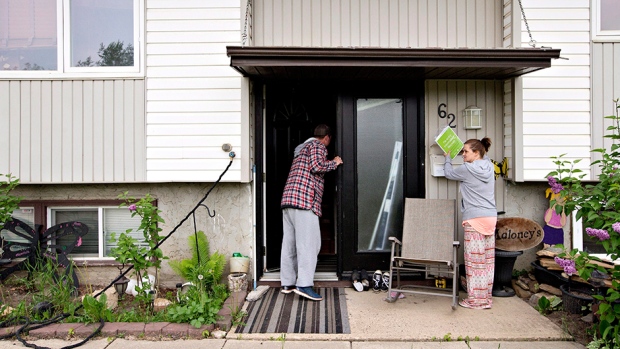Jun 2, 2016
Pattie Lovett-Reid: How to rebuild after a disaster like the Fort McMurray fire

Insurance is a critical part of a financial plan. It is one of those distinct products that’s best if it’s never used and invaluable if and when you need it.
As many Fort McMurray residents return home, not knowing exactly what to expect and fearing things could be much worse than they anticipated, TD Bank offers some advice on what steps people can take next.
By now, insurers have ensured residents have had their immediate needs taken care of and, where possible, that the home has been secured to minimize further loss. Recognizing that not all Fort McMurray evacuees will return home until possibly September, additional temporary living arrangements will be required.
But for those who are making their way back home, here’s a look at the steps they will need to take from an insurance perspective:
1) The damage to the home is done and now experts will help to prepare estimates outlining all the repairs/rebuild required.
2) Cost estimates will be reviewed to ensure reasonableness and accuracy.
3) Then comes the time to choose repair options, which include three possibilities:
- Repairs completed by your insurers’ preferred vendors.
- Do-it-yourself repairs, or using a vendor of your choice that’s been approved by your insurer first.
- Opting for a cash settlement, which is an option for some that requires a review of your particular situation and available options.
In addition, if you have a mortgage, your lender may need to be involved.
4) In many cases, the deductible is being waived on automobile and residential policies caused by the Fort McMurray wildfire this year.
5) The last step is to complete your claim.
Jane Blaufus, a best-selling author, speaker and business coach and also a veteran of the life insurance industry, always thought that if something unthinkable happened to her, she would be well-prepared and able to handle it better than others. She says she was wrong though, and now believes it’s important to learn from a tough situation. Here are a few of her takeaways:
- Keep your important documents/receipts in a fireproof home safe.
- Keep a copy of all of these documents also in an off-site location.
- Make sure that your home, casualty and auto insurance policy covers your current needs and your future needs. Ensure you have the proper replacement value for property.
- Make sure your wills and estate plans are up to date and all beneficiaries are correct including legal guardians appointed for your children.
What happens if the extent of the damage is much worse than you imagined? This is where you begin the process of listing all your belongings, and try to determine what can be repaired and what has been damaged beyond repair. If the list is extensive (and it very well could be), your insurer may decide to bring in a company to help you put it all together. Keep in mind that receipts are helpful, but if you don’t have them, you will likely have to provide information on when and where your belongings were purchased and the price you paid. You likely will have to fill out a Proof of Loss form. Once all of this is done, you can go shopping to replace belongings that cannot be repaired – but that’s only when your advisor confirms you’re entitled to the full replacement cost or actual cash value.
Finally, sometimes in order to move forward you may have to physically move locations. This is a very tough situation and there are many definitions of grief out there, so go with what works for you. Insurance is not going to help ease the pain, nor will it make you whole financially – but it can sure help.







